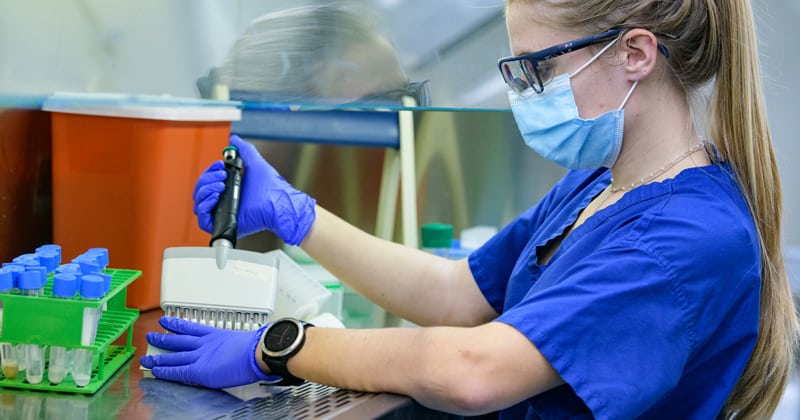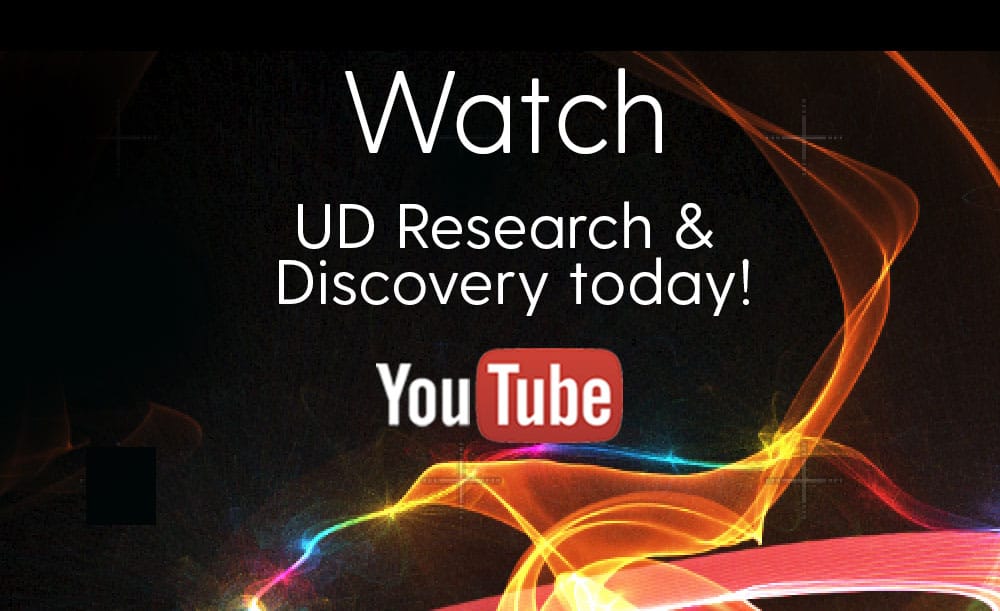RESEARCH
DISCOVERY
A Blog Devoted to UD Innovation, Excellence & Scholarship
COVID-19
Studying the virus in real time
Scientists are using computational biology and bioinformatics as a means to help develop medicine that will treat or prevent the coronavirus and other diseases.
The coronavirus (COVID-19) is still, after a year of wreaking havoc worldwide, largely a puzzle. As physicians and researchers around the globe work to treat patients and study the virus, they are amassing an abundance of data — thousands upon thousands of individual puzzle pieces.
But how can the scientific community begin to sort through all these pieces? How do they go about identifying patterns within them? In other words, how do they put the puzzle together?
Enter the field of computational biology and bioinformatics, in which scientists leverage technology to store, analyze and comb through data — much of it collected at the subcellular level. They develop and use methods and algorithms that make pattern-finding a possibility. Ultimately, these patterns help us understand — and combat — disease.
“A computer is a microscope for looking at data that is too big to see with our own naked eye,” said Hagit Shatkay, a professor of computer and information sciences in the College of Engineering at the University of Delaware. “Faced with a glut of information, a computer can help us focus on what’s most important.”
Typically, undergraduate and graduate students in Shatkay’s Intro to Bioinformatics and Computational Biology course at UD focus on living things — primarily humans and their cells. The class discusses, say, the computational methods used for human genome sequencing or for DNA sequence alignment, in order to find genetic variations that may cause disease.” The class discusses, say, the computational methods used for human genome sequencing or for DNA sequence alignment, in order to find genetic variations that may cause disease. Looking at viruses, which do not have a living cell structure, has traditionally been less intriguing.
At least, that is, until now.
With COVID-19 top of mind, a simple virus — a tiny, infectious agent that is not alive in its own right but that hijacks the cells of a human body in order to replicate — has become front and center in the life of the everyday American… and the everyday bioinformatics student. A silver lining to this crisis (to the extent one can be found) is an abundance of teachable moments.
“This course makes you realize how important computational methods can be in the face of a pandemic,” said Gongbo Zhang, computer science doctoral candidate in Shatkay’s lab, and an alum of Shatkay’s course, who now serves as the class teaching assistant. “There is an urgent need for treatments and a vaccine, and computational methods are helping address these challenges.”
For this topical perspective, Shatkay has brought in a lineup of expert guest speakers, including Professor Carl Schmidt, a genome scientist with early roots in virology from UD’s Department of Animal and Food Sciences, and Sarah Schwenck, a marine virologist from the Scripps Institution of Oceanography in San Diego (turns out the world’s oceans harbor 200,000 virus species).





